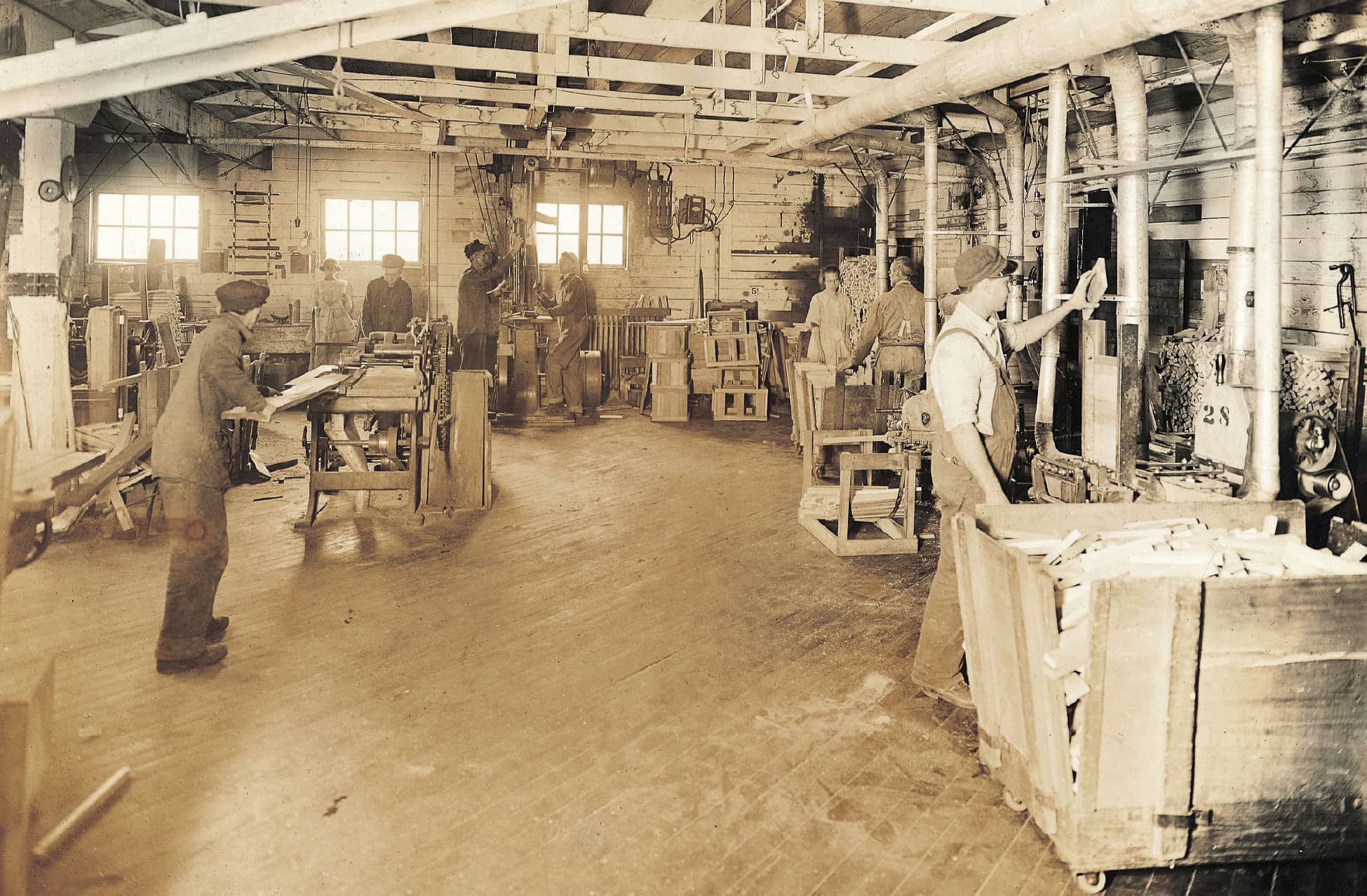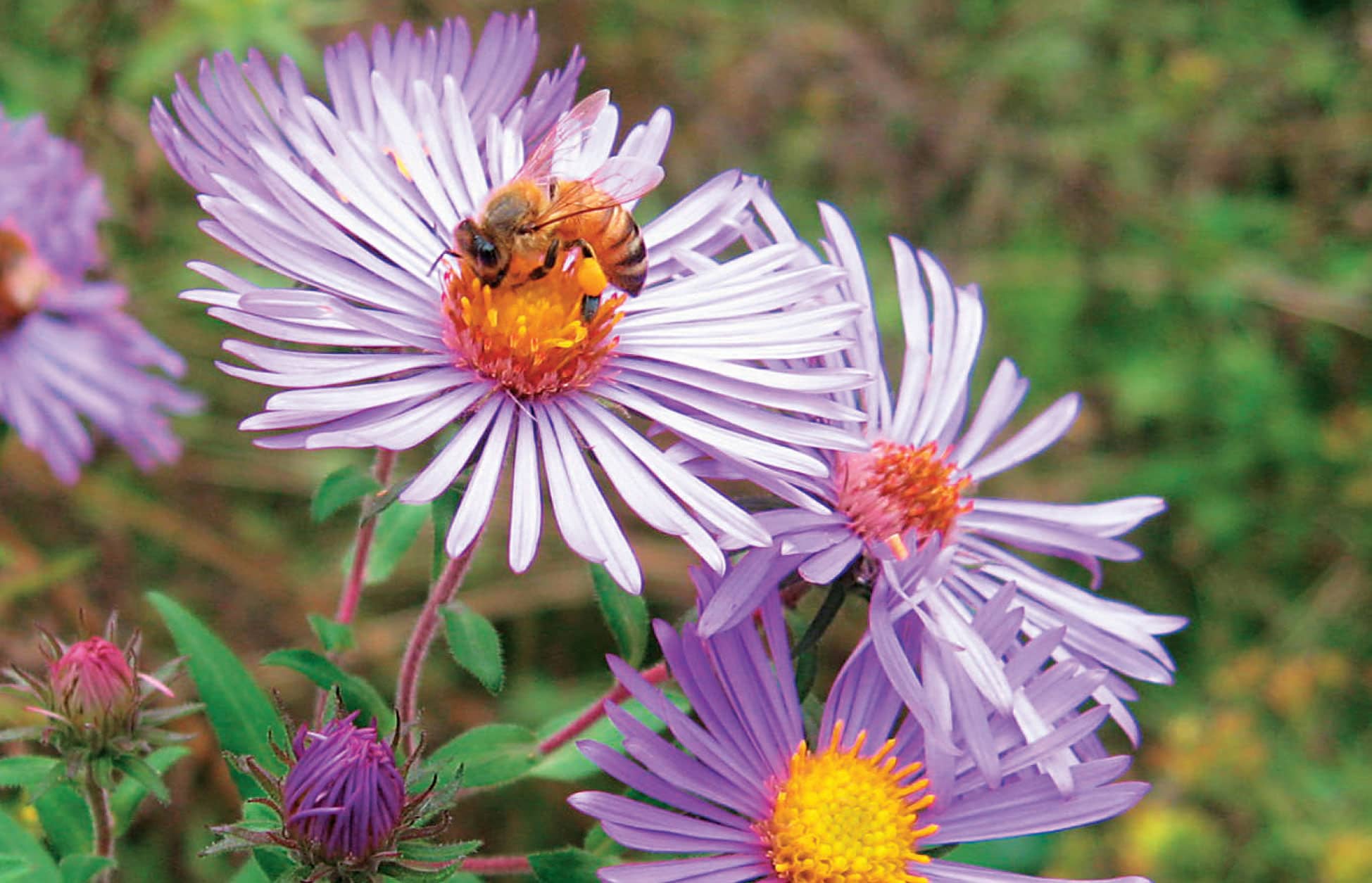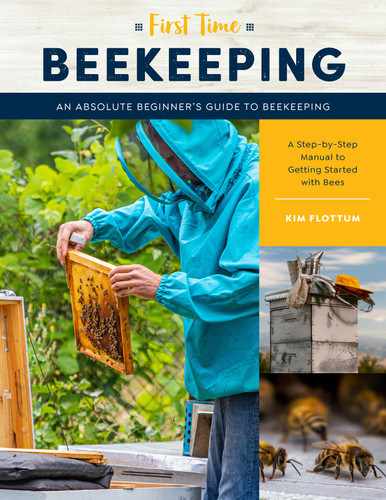INTRODUCTION
I’ve been around bees, beekeeping, and beekeepers for more than forty years, and there has never been a better time to have a few honey bee colonies in your backyard. They pollinate the vegetables in your garden, increase the production of your orchard trees, and make the whole neighborhood thrive. In fact, the crops that are pollinated in part or in whole by honey bees supply us with an incredible amount of our daily sustenance. Scientists and crop producers tell us that honey bee–pollinated plants may account for a third or more of our daily diet.
Perhaps as importantly, honey bees make wild plants more productive, more luxurious, and more nutritious for the wildlife that relies on them for sustenance.
So, if having a couple colonies of honey bees out back sounds like a good idea, let’s find out what thousands of beekeepers already know.

A look at only a small part of the A. I. Root wood shop around the turn of the last century.
IN THE BEGINNING
The way we keep bees today can be traced to the introduction of the modern hive in the mid-1800s. L. L. Langstroth, a minister who suffered from a nervous condition, became a beekeeper to ease his discomfort. He became wise in the ways that bees were being kept in all parts of the world and experimented with his own bees, looking for a way to keep bees from fastening their combs to the top and sides of the boxes.
The story goes that one day as Langstroth was walking home from a visit to a beeyard, he had a vision of a frame—a complete square of wooden strips that surrounded and contained the beeswax comb. The bees could attach their comb to the strips rather than the top and sides of the hive box. He saw a means of “hanging” the frame inside the box the bees lived in. This kept the comb separated from the top, sides, and bottom of the box by just enough space for the bees to pass. This concept revolutionized beekeeping and is the perfect example of what working with the bees, rather than against them, can accomplish. This fundamental design has remained virtually unchanged since Langstroth’s discovery.
Today, an experienced assembler who has all the necessary tools can put together a four-box hive, including frames, covers, and the rest, in 3 to 4 hours. A first-timer with most of the tools could do the same thing in, maybe, two days.

L. L. Langstroth, holding the frame he invented, sitting in the beeyard at the A. I. Root Company in Medina, Ohio, many years after his “Eureka!” moment.
But these days, the journey isn’t the goal for many people. It’s having bees in the garden. This is where technology, labor, and the eternal press of time come together. There’s now a full range of assembly choices, ranging from the traditional build-it-yourself kits to painted, fully assembled hives. If you choose the traditional route and assemble your own beekeeping equipment, be forewarned that the assembly instructions that accompany these kits are often woefully inadequate. But then, so are the typical instructions for assembling a propane gas grill.
A NEWER CONCEPT
There’s been a revolution in how beekeeping equipment is purchased. Preassembled and painted beehives are relatively new and have made beekeeping more practical. For beginners, the simple reality of having neither the right tools nor a practical place to use them are real reasons why assembling their own equipment has become so difficult. This distracts from what hobbyists really want to do—keep bees in the garden.
So, once you’ve wisely decided to use preassembled equipment, you’ll find there are still more choices to make. For instance, what are your physical limitations? The common brood box—called a deep—when full of honey and bees weighs nearly 100 pounds (45 kg). But smaller boxes, called mediums, weigh about 60 pounds (27 kg) and are a better alternative for the average-strength beekeeper.
There are boxes available that hold only eight frames, instead of the ten, and are available in medium size. One of these, when full, weighs in at only 45 pounds (20 kg) or less.
If you use this newer equipment, manage the hive well, and have even average weather, you’ll end up with around 100 pounds (45 kg) or so of honey from each one of your hives. One hundred pounds—per hive.
But if your goal is not to produce record-breaking crops but, rather, to learn the ropes, enjoy the process, and not be overwhelmed, then the best way to begin is to start with one, or better, only a couple of hives in size eight (all eight-frame mediums) rather than ten (ten-frame deeps), and manage them so that monstrous honey crops don’t overwhelm you with work and storage problems.

Many large colonies may be the goal, but it is not the place to begin.
